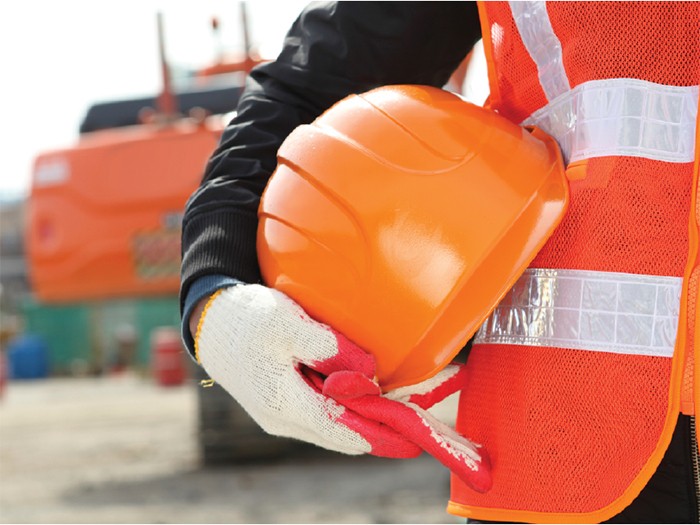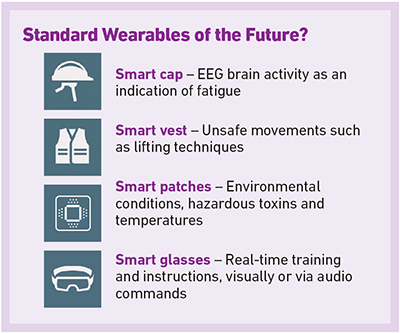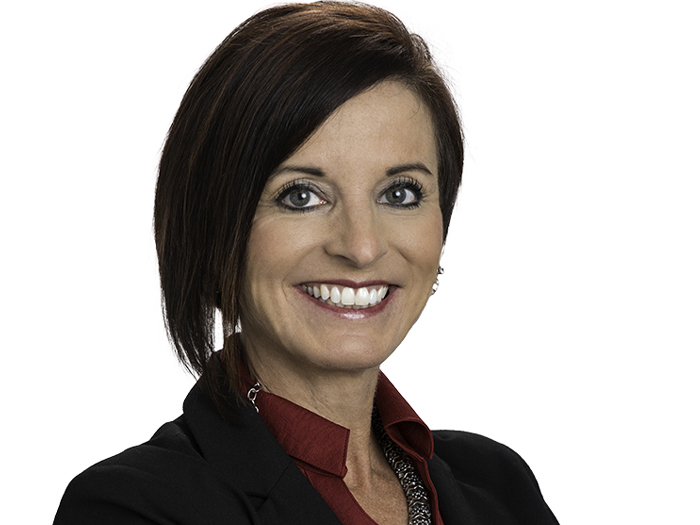Wearables and Worker Safety
Safety 2.0

Their emergence has been hailed as a “game changer” and “the biggest discussion topic in insurance.” Inspired by developments in the consumer marketplace, connected personal protection equipment, or “wearables,” can track a variety of employee risk factors and generate data so powerful that many believe it will revolutionize workplace safety procedures and risk modeling.
Health-related wearables such as the FitBit are taking the consumer market by storm, but far more powerful technology is being developed and implemented in commercial settings, from heavy industry to aviation, logistics and manufacturing.
 Mining giant Rio Tinto is an early adopter of wearables, providing its workers with a “SmartCap” that measures brainwaves to detect fatigue. Honeywell and Intel recently released a prototype of their “Connected Worker” solution for industrial workers and first responders, which uses a hub of sensors to track workers’ location, vital signs, motion and exposure to hazardous gases.
Mining giant Rio Tinto is an early adopter of wearables, providing its workers with a “SmartCap” that measures brainwaves to detect fatigue. Honeywell and Intel recently released a prototype of their “Connected Worker” solution for industrial workers and first responders, which uses a hub of sensors to track workers’ location, vital signs, motion and exposure to hazardous gases.
Whether in the form of vests, caps, glasses or materials, it is now possible to generate valuable data that brings risk managers and insurers closer to workplace risk than ever before. It is hoped these insights should in turn help safety supervisors improve workplace design and procedure, foster safer worker behaviors and reduce workers’ compensation claims.
Having observed several pilot studies closely, David Bassi, former head of innovation and risk consulting, casualty for AIG, said safety wearables could reduce losses by up to 50 percent in some situations.
“The test cases are so compelling, it’s just a matter of scalability,” he said.
“The explosion will come pretty quickly. Virtually everyone I know in a safety role at a big company is interested in participating in a pilot or thinking about how to incorporate this kind of technology into their workplace.”
With demand strong, supply growing and costs coming down, the final piece of the puzzle is the insurance market, which insureds hope will begin to offer responsive pricing, customized products and client incentives once wearables’ benefits begin to be realized.
“In an age when data is becoming ever more critical for the insurance industry, this is huge,” said Michael Sillat, CEO of WKFC Underwriting Managers (part of Ryan Specialty Group). “A lot of the technology being developed is only being spoken about and is not available in the marketplace, but it has certainly grabbed my attention and that of many of my peers,” he said.
“Connected devices are going to have profound implications for the commercial property casualty insurance world, and wearables in particular are going to be very important in improving worker safety,” said Lex Baugh, president of casualty at AIG, which recently invested in wearable tech firm Human Condition Safety.
Nigel Walsh, vice president of CapGemini, expects more partnerships of this ilk, and heralds the ability to interact and advise on a daily, hourly or real-time basis as “game changing” for insurers.
“Insurers will no longer be claims paying companies — they will become better risk managers. When you provide value-added service and insight driven out of IoT, rather than just changing the price, you create real engagement and real value,” he said.
However, insurers don’t make knee-jerk adjustments to their terms or pricing, so for now organizations will need to take something of a leap of faith, and invest in wearables knowing it may take a number of years for improved loss experience to yield premium reductions.
Challenges
The costs associated with implementing wearables into the workplace vary hugely, from a few dollars for the most rudimentary device up to millions for enterprise solutions including real-time feedback loops, network operation centers and the latest wearable technology. While the cost of equipment and data capacity continues to slowly decline, companies will need to think carefully before investing.
 Rachel Michael, senior consultant in Aon Global Risk Consulting’s ergonomics practice group, said there are “no excuses” for not knowing the location and well-being of workers in hazardous jobs like firefighting or mining, for whom even expensive investments will be worthwhile, but she pointed out that companies should be sure they have done all they can to improve workplace ergonomics prior to investing.
Rachel Michael, senior consultant in Aon Global Risk Consulting’s ergonomics practice group, said there are “no excuses” for not knowing the location and well-being of workers in hazardous jobs like firefighting or mining, for whom even expensive investments will be worthwhile, but she pointed out that companies should be sure they have done all they can to improve workplace ergonomics prior to investing.
“If an employer is palletizing 30-lb. boxes at ground level, do they really need a wearable spinal loading measurement system to determine whether this is bad?
You could save lots of time and money if you fix your line first,” she said.
Data management is also a concern — both in coping with the sheer volume of data (which Bassi said runs on some pilots into exabytes per week) and also avoiding what Michael terms “death by data” — having reams of information at your disposal but no clear plan of action.
Before a wearable technology is even considered, Michael said a planning discussion including the risk manager, HR, IT and possibly several other departments must take place. “You need to understand how much and what type of data is to be collected, how it is to be used, and what changes can be driven with the outcomes,” she said.
And companies should be prepared in case data raises uncomfortable truths, she added.
“If you hook all your workers up to smart caps and find that they are all suffering fatigue, are you willing to shut down your operations?” Michael asked, noting that this would be all but impossible in industries such as health care, firefighting or aviation.
Wearables are faced with various other challenges — from unions raising objections over potential worker discomfort or invasion of privacy, to workers becoming over-reliant on or overconfident because of the technology, or even the potential health risks associated with prolonged proximity to sensors and WiFi.
Then there are the questions around liability. If a worker with known heart issues has a heart attack on the job, could an employer tracking the vital signs be deemed negligent for not acting on warning signs? Would companies use wearables to offload responsibility for unsafe practices and workplace injury on their staff?
Ultimately, this highly promising technology should offer a win-win for insureds and insurers alike, but it can only be successful if the data is used effectively and risk managers enforce best practices through training, education and procedures.
“If all we do is sit back at the end of the week and look at the data, we’ve missed the opportunity,” said Michael.












